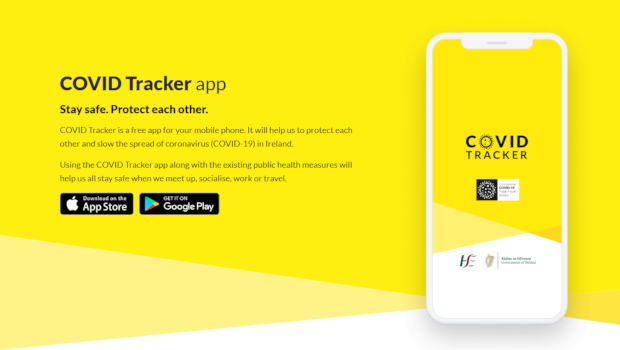
Track, trace: trust?
Fund raising, rounds of applause, food drops – we all, in some small way, want to help our frontline workers in their efforts to keep us safe amid this pandemic.
In our own ways too, we want to help by modifying our behaviour. We wash our hands, stay at home, and keep our distance when we have to go out.
But after some months of lock down, our collective patience is wearing thin. Crowds outside pubs, clandestine hair appointments, crowded beauty spots – the signs are all there.
However, the newly minted Minister for Health Stephen Donnelly said this morning that amid many days of bad Covid-19 news, today (07/07/2020) is a good day.
The minister’s comments were in relation to the launch of the HSE Covid-19 contact tracing app, and number of downloads it has already clocked up – headed for 123,000, according to some reports. Though now reports such it may be as high as 250,000. (See post script below)
This is remarkable and reassuring. It shows that some people are taking their personal responsibility very seriously. But ultimately, this may be of little use.
If one looks at the numbers, they do not really add up.
The app requires a relatively recent smart phone, though more for the Bluetooth capability than anything else. That is likely to reduce the numbers for whom the app will work. Not by much, but still a reduction.
Secondly, effective usage of the app requires keeping your phone on you while you are socially interacting. Not leaving it in the car, or in the key box at home, or anywhere else one might leave one’s device when not actively using it. It also requires frequent enough check-ins and updates of symptoms, if any.
Even with these caveats in terms of usage, there is still the question of distribution and penetration.
First of all, it has been generally theorised that to be effective, a contact tracing app would need something of the order of 60% population penetration to be effective.
As of 2019, the RoI population stood at 4,904,000 or there abouts.
The 60% required would constitute some 2,942,400.
Smartphone penetration here is high, with some sources saying nearly three quarters of the population (73%), while others say as high as 87%, that would mean that between 3,579,920 and 4,266,480 people in Ireland could download the app.
The 60% population threshold would constitute 82% of the lower number and 67% of the upper one. That is still incredibly high in terms of app penetration in a population.
A useful comparison here was done with by Forbes, where Zak Doffman drew the comparison with WhatsApp, illustrating that it took 11 years to break an 80% install base internationally. That is most impressive, but not encouraging for the COVID tracker apps.
Of course, the situations are not the same, but even with a best case scenario, 123,000 installs per half day would still mean our 60% penetration would not be achieved for 24 days, even if that early enthusiasm is carried on. If the 250,000 figure is to be believed, the population threshold could be reached in as little as 12 days. But it is unlikely that day 1 enthusiasm will be carried forward to day 10, or 12.
Elsewhere, the performance of these apps in terms of distribution and penetration has not been very good, even among what might be termed engaged populations. For context, Iceland had recorded only 38% downloads for its equivalent, far below the needed 60%, as had Singapore, where numbers were higher. Despite some 2.1m people installing the app there, penetration rate was still at just 37%.
This has lead to many worrying that Covid-19 contact tracing apps will not be a game changer in the fight, as they simply will not be sufficiently supported.
From a medical perspective, virus tracker apps may not be that significant, from a statistical perspective, they may yield valuable information in terms of behaviours, risk groups and more illustrative, if not diagnostic, data. All of this will help, but may also lead to inflated expectations as to the effectiveness of such systems, which all feed back into an affect on public behaviour.
We have already seen that younger people have far greater risk appetite, due their relative risk with the virus. This has led to the house parties, the outdoor gatherings and even Covid-19 parties and infection bounties. If that is further emboldened by the misplaced notion that a tracker app will further reduce the risk, and the crisis will no doubt deepen.
For my part, I have downloaded the app and will be using it as intended, but I do not hold out much hope for it being a critical element of the ongoing fight against Covid-19.
POST SCRIPT: As of 16:30 on the day of launch, RTE News is reporting that downloads have now exceeded 500,000.
This is hugely encouraging but it remains to be seen if the threshold level will be reached.
POST SCRIPT: This morning (08/07/2020), RTE News is reporting that the COVID-19 tracking app has been downloaded 862,000 times.
This figure represents 29.3% of the threshold needed to be medically effective. This is a very encouraging a figure and bodes well for the target, already exceeding the total number of downloads in some countries.






Subscribers 0
Fans 0
Followers 0
Followers